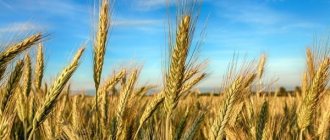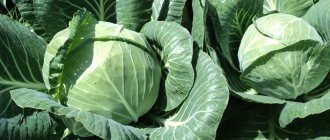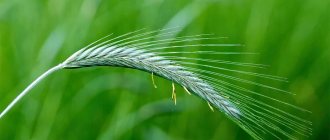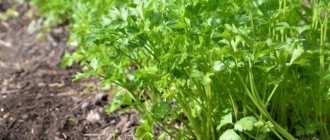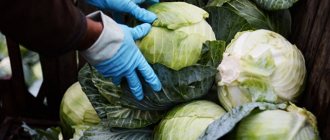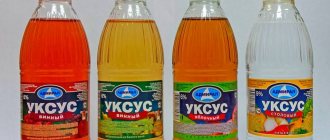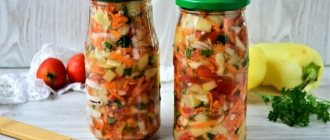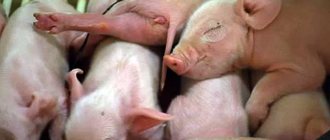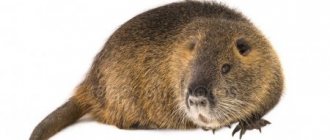There are two ways to sow onions. It is grown from sets or seeds called nigella. While markets sell mainly bulbs for sowing, seeds of different varieties are available in specialized stores. To get healthy planting material for the desired plant, it is better to use nigella.
Growing the crop from seeds is complicated by the fact that turnips take two seasons to develop. Pre-winter sowing will help speed up the process. In this case, large vegetables will be ready for harvest in the fall. Is it possible to sow chives before winter, how and when to do it, read on.
Is it possible to plant chives before winter?
Nigella is the common name for onion seeds that form on onion shoots after ripening. Many gardeners practice sowing seeds before winter, taking advantage of the obvious advantages of this method of growing onions. Among onion varieties, nigella seeds are more diverse than onion set varieties. When choosing nigella seeds, it is easier to decide on the chosen variety and not be disappointed when collecting when the sowing does not give the expected varietal result. Black onions never bolt because they do not have time to gain the required leaf size to form a peduncle.
For the middle band
Many varieties of sweet onions have been developed for central Russia and the Moscow region. All of them are divided into early-ripening, mid-ripening and late-ripening.
You can understand how to grow onions for greens on a windowsill by watching the video in this article.
But how to grow onions at home is indicated here.It will also be interesting to learn about how onions are grown from seeds to pero Aeroponics: //gidfermer.com/sadovodstvo/ovoshhevodstvo/vyrashhivanie-luka-na-pero.html
This video will help you understand how to grow leeks from seeds.
Arzamas
This variety is classified as mid-season. Harvesting can be done 100 days after planting. The weight of one fruit is 30-70 g. It can be used for growing through seeding.
Arzamas
The shape of the bulb is round-cuboidal, and its size is medium. From 1 m2 you can get 1.4 -3.2 kg of yield. Arzamas is characterized by excellent keeping quality and resistance to major ailments. But how onions are grown in a greenhouse is described in great detail in this article.
Comet F1
This variety is also mid-season. Harvesting can occur 115 days after planting the onions. The shape of the fruit is round, weight is 50-70 g. The scales are white. The variety allows you to grow large, even bulbs that have a sweet taste.
Comet F1
In addition, the variety is in great demand among summer residents due to its high yield. From 1 m2 you can get 2 kg of fruit. Culture resists various ailments. For those who want to understand whether it is possible to plant onions next to garlic, and how to do it correctly, this information will help to understand.
Spanish 313
This variety produces late harvests. It is necessary to collect it only on the 140th day from the moment of planting. The fruits have a round shape and medium density. The taste can be sweet or semi-spicy. From 1 m2 you can collect 2.4-3 kg.
Spanish 313
Its shelf life is weak and it is not recommended to be used for long-term storage. But is it possible to plant tomatoes after onions, and what varieties can be planted, is described in detail in this article.
Ecstasy
This variety of sweet onion has been in demand among gardeners for a long time. Its cultivation can be carried out either from seeds or from sets. The color of the bulb is yellow and its shape is round. The weight of one fruit is 100 g. From 1 m2 you can collect 1.1-1.3 kg.
Onion Ecstasy
Sima
This variety allows you to grow onions from seeds. The bulbs have a light brown color and an ellipsoidal shape. The weight of one fruit is 110 g. The variety is single-germinate. From 1 m2 you can collect 3.2 kg.
Sima
Candy F1
This is a hybrid variety that allows you to grow onions from seeds. The color of the bulbs is dark brown. The shape is ovoid. The weight of one fruit was 80 g. From 1 m2 you can get 1.8-3.6 kg. But how to grow Yalta onions, and what are the features of its cultivation, is described in great detail in this video.
Candy F1
Capricorn F1
This is a hybrid variety that is grown from seeds. It is an early ripening plant, but it cannot be grown in harsh climates. The bulbs are ovoid and brown in color. The weight of one fruit is 100-130 g. From 1 m2 you can collect 2.4-3.6 kg. It will also be interesting to learn about how to prepare nigella onion seeds for sowing.
Capricorn F1 Sources used:
- https://agrognom.ru/vegetables/bow/luk-chernushka-posadka-pod-zimu.html
- https://svoimi-rykami.ru/ychastok/rassada/sorta-luka-iz-semyan-za-odin-sezon.html
- https://fikus.guru/ovoschi/luk/vyraschivanie-luka-chernushki-vybiraem-luchshee-vremya-dlya-poseva-na-rassadu.html
- https://poferme.com/ogorod/ovoshhi/luk/chernushka.html
- https://proposadki.ru/ovoshhi/luk/luk-chernushka-pod-zimu
- https://mr-ogorodnik.ru/luk/posadka-pod-zimu/
- https://proroslo.ru/lukovye/kak-pravilno-posadit-luk-chernushku-pod-zimu.html
- https://agrognom.ru/vegetables/bow/kak-poseyat-luk-chernushku.html
- https://gidfermer.com/sadovodstvo/ovoshhevodstvo/sladkie-sorta-luka-repchatogo.html
Advantages of planting before winter
- The advantages of sowing nigella onions in the fall include the following factors:
- Pre-winter sowing of nigella onions is a natural way of propagating onions and is closest to the natural growing cycle.
- Sowing seeds before winter increases the plant’s immunity, resistance to diseases and pest damage. Onions are obtained with a powerful root system, which manages to form in the first days of spring.
- Saving time when carrying out spring field work in the garden is also an important factor.
- Melt water in the spring will provide the beds with sufficient moisture, which will reduce the frequency of watering.
- There is no need to monitor the timing of sowing - all this will be done by weather conditions and the spring sun.
- Onion beds will be supplied with vitamin greens in early spring, and the resulting bulbs will be well stored. Compared to spring sowing, this is a preferable option.
- A long growing season can be used to obtain full-fledged winter onions by autumn or to obtain a fairly large set.
Preparatory work
Before sowing nigella onions, it is necessary to carry out preparatory work, which includes the correct selection of seeds, their processing and preparation of the site for planting.
Seed sorting
Seeds for cultivation can be purchased in accordance with the chosen variety, or you can grow it yourself, using the variety you like for these purposes. The varietal bulb for obtaining seeds is carefully selected. It should be large, without damage or signs of disease. A bulb planted in spring will throw out an arrow with a peduncle, where nigella seeds will ripen.
Important! Nigella seeds remain viable for only 2 years, so it is advisable to use the seed immediately. In the second year, germination rate decreases by half.
It is advisable to tie the peduncle and tie the inflorescence with the seeds with a light cloth so that the seeds do not fall off prematurely. At the first signs of ripening (the seeds begin to fall out), the flower stalks can be picked and placed in a warm, dry room for ripening.
Both purchased seeds and those prepared independently must be calibrated and the largest ones selected for sowing, which will give stronger seedlings. For these purposes, you can use the method of sifting through a sieve. You can place the seeds in water and mix - the floating seeds are considered immature and are not suitable for further sowing. After this check, the seeds must be dried immediately.
Pre-planting seed treatment
The quality of the seed can be checked by germination on a damp surface of cloth or paper. The best indicator of germination is the germination of more than a third of the total number of nigella seeds. At lower rates, the seed material is unsuitable for sowing. Having decided on the quality, you can begin further preparation - disinfection.
The packaging of purchased seeds must indicate disinfection, and seeds obtained independently should be disinfected by soaking:
- for half an hour in a pale solution of potassium permanganate (1%), and then in a saline solution (200 g per 10 liters of water) for 12 hours;
- for half an hour in aloe juice;
- in a fungicide solution according to the instructions.
This treatment will protect crops from infection by stem nematode and onion fly.
After processing, the seed is thoroughly dried. Find out in more detail how and with what to process onions before planting.
Site preparation
Onion crops love loose (not clayey), moderately moist, humus-sandy soils that are well ventilated to prevent moisture stagnation.
The soil for sowing nigella must be prepared in advance:
- Before the beginning of October for the northern regions and until November for the southern regions, i.e. before the onset of frost, it is necessary to prepare the beds. The site should be located in a sunny place, where there are no trees or shrubs nearby that shade the seedlings.
- If the site is in a lowland, the beds are raised by 20–25 cm to avoid stagnation of water during irrigation or in case of precipitation. Raised beds will warm up faster in the spring and ensure friendly shoots.
- The predecessors in the sowing area should be herbs, potatoes, early cabbage, radishes, cucumbers, carrots, tomatoes or legumes.
- The area is dug up, cleared of weeds and roots, and loosened. You can use the area under fallow or in place of a lawn. In this case, it is enough to remove the top layer of turf, prepare the beds, and leave the passages with grass.
- A nutrient mixture is added to the dug area for each square meter: compost mixture - 6 kg, superphosphate - 50 g, ash - 200 g, and in early spring it is enough to add 25 g of nitrogen fertilizers per 1 m² of bed. You can add sand or sawdust to heavy soil.
Answers to frequently asked questions
What to do if the soil is waterlogged?
In this case, you can sprinkle the holes with a small layer of river sand.
Is it necessary to loosen the soil?
The soil should not be loose before planting; it can even be trampled down if necessary.
Do I need to trim the neck of the onion?
It is not advisable to cut the neck, as cutting can lead to infection.
Is it necessary to dry the seeds?
Before planting, the seeds must be prepared and, if necessary, disinfected. But you can’t plant them wet; you need to dry them thoroughly.
In what position should I plant?
The bulbs must be planted vertically in the hole, otherwise the emergence of seedlings will be difficult.
Optimal planting dates before winter
With the onset of stable cold weather, when the soil freezes or snow falls, you can sow nigella onions in the beds. It should be remembered that onion seeds can germinate at a temperature of +2...+4°C during a late thaw, which will lead to the death of seedlings in winter, therefore, based on the weather, sowing is carried out in October-November, depending on the region of cultivation.
Important! The soil under the crops can be watered with a solution of table salt (200 g per bucket of water) to avoid damage to the crops by the onion fly, or sprinkle the sowing grooves with salt.
Landing technology
By dividing the planting technology into stages, you can correctly organize the order of sowing onions before winter:
- Sowing of nigella can be done in grooves 2–3 cm deep or scattered. The row spacing is 20–25 cm. The seeds are sown quite densely if thinning is carried out in the future. You can sow beacon crops (radish, lettuce, peas) in the grooves, which with early shoots will indicate the location of the beds with nigella.
- Before winter sowing, it is impossible to check the germination of seeds by soaking (they should germinate only with the onset of spring), so sowing is carried out with dry seeds at a rate of 100 seeds per 1 m². Seed consumption during winter sowing is greater than when sowing in spring.
- The seeds are scattered thickly (the germination rate of chives is average) into the garden bed, slightly crushed, and sprinkled with soil (1–2 cm). Watering the beds after sowing is not recommended. In spring, melt water will ensure sufficient soil moisture.
- Beds in regions with cold winters are mulched with leaves, straw or spruce branches. In the spring, the mulch must be removed to allow the seedlings to germinate.
Spring sowing
Quite often, nigella is planted in the spring. This option is suitable for regions with a harsh climate - the Urals, Siberia. Spring sowing can also be done in the Moscow region.
Seed preparation
To get a high-quality harvest, the seeds need to be prepared. Thanks to special treatment, it is possible to reduce the period between sowing and the appearance of sprouts.
1 month before planting, it is worth assessing the germination parameters of nigella. To do this, you need to take 20 seeds, put them on a wet cloth and leave for 2-3 weeks. As a result, 80% of them should sprout - this indicates their high germination rate. In order to combat possible fungi, the seed must be soaked in a solution of potassium permanganate.
To speed up the germination of seeds, they are immersed in water for 12-18 hours. It is also permissible to use a growth stimulator. After that, the nigella must be dried for a quarter of an hour and planted in open ground.
Preparing the bed for planting
To plant seeds, you must first make holes in the ground 2 cm deep. An interval of 20 cm should be maintained between them.
Optimal timing of sowing in open ground
It is recommended to plant nigella onions in early spring - immediately after the soil has thawed. Before this, the seeds can be powdered with chalk. This will help improve their flowability and make them more visible against the background of the ground. They should also be covered with humus 2 cm thick.
Further care
After spring shoots, further care consists of timely watering, thinning, weeding and fertilizing as necessary.
Watering and fertilizing
During the initial formation of the root system, which takes place in the first 2 weeks after germination, the need for moisture is very high. Taking into account precipitation, during the intensive growth phase, watering is carried out 2-3 times a week, avoiding either drying out or waterlogging of the soil. For irrigation, it is advisable to use warm water (+14…+ 17°C). Too warm water will lead to damping off of crops, and cold water will slow down growth and development.
Advice from experienced gardeners
For a larger harvest and easier cultivation, follow the advice of experienced gardeners:
- To make it easier to sow nigella and control the number of seeds per 1 m2, planting material is mixed with chalk powder or light sand.
- Watering and fertilizing are carried out early in the morning or at sunset with low solar activity. This reduces the risk of burns on plants.
- The day before fertilizing, the beds are watered abundantly so that the fertilizers do not harm the root system.
- Purchased planting material is disinfected and calibrated in the factory. This is evidenced by the inscriptions on the packaging. Such seeds are not disinfected at home, but they are still checked for germination.
- The readiness of the crop for harvesting is indicated by yellowing and wilting of the feathers.
- If nigella is planted on greenery, then spring thinning is done only once.
For onions planted before winter, extreme warming followed by the onset of frost is dangerous. If the seeds manage to germinate during the thaw, they will die if the temperature drops sharply.
Additional recommendations
To the given rules for sowing nigella onions before winter, you can add the following recommendations:
- To obtain seed material, you need to select full-fledged uterine bulbs measuring 5–10 cm. The selected heads should be stored at a temperature of +2...+8°C; lower storage temperatures will not ensure the release of the peduncle and the ripening of seeds. Before planting in the garden, the bulb must be warmed up (temperature +15...+20°C) and disinfected with a solution of potassium permanganate.
- Onion crops are subject to cross-pollination, so to obtain high-quality seeds yourself, the mother plant should be planted away from the onion beds.
- In spring, you should not allow the formation of a dry soil crust through which tender seedlings will not be able to break through.
- Dense spring nigella shoots can be used as seedlings. To do this, you need to carefully select the sprouted seedlings and transplant them to another place.
- Onions are harvested as they ripen, with lodging and partial yellowing of the leaves. To do this, you need to choose a dry and warm day to dry the onions in the beds. In case of precipitation or dew, put the onions under a canopy. It is advisable to complete the harvest before the onset of prolonged rains and cold nights.
- Careful selection of a variety for cultivation in the appropriate region will help you obtain a full-fledged head or high-quality seed. Traditional varieties of onions: Strigunovsky, Exibishen, Bessonovsky, Karatalsky, Vostorg, Stuttgarten Risen, Centaur, Myachkovsky 300. Red varieties of onions - Red Baron, Danilovsky, Shaman.
Pre-winter sowing of nigella onions is easier and more economical than sowing in spring. The two-year cycle of ripening of onion crops can be accomplished in one season if sowing seeds before winter produces friendly and strong shoots due to compliance with all the conditions for proper cultivation.
Crop rotation
Let's look at the predecessors of onions when planting before winter. They can be crops that loosen the soil and saturate it with useful micro- and macroelements:
- cereals (exception – oats);
- mustard;
- tomatoes;
- phacelia;
- peas;
- beet;
- cabbage;
- rape;
- Vika;
- beans.
It is permissible to plant winter onion crops after radishes and carrots, if their harvest was completely harvested before the beginning of August.
Several crop rotation schemes are known. For example, a 3-year cycle: leafy vegetables are grown on one vegetable bed in the first year, crops with ground fruits are planted the next year, and root vegetables are planted in the 3rd year.
You can’t plant onions after:
- parsley;
- celery;
- radishes;
- beans;
- alfalfa;
- red clover.
Onion crops are planted on one ridge for no more than 2 years. It can be planted again in the same bed only after 4-5 years.
To obtain a large and high-quality harvest, it is necessary to observe planting dates, agricultural techniques and choose good neighbors so that each crop does not interfere with each other’s development in the garden.
